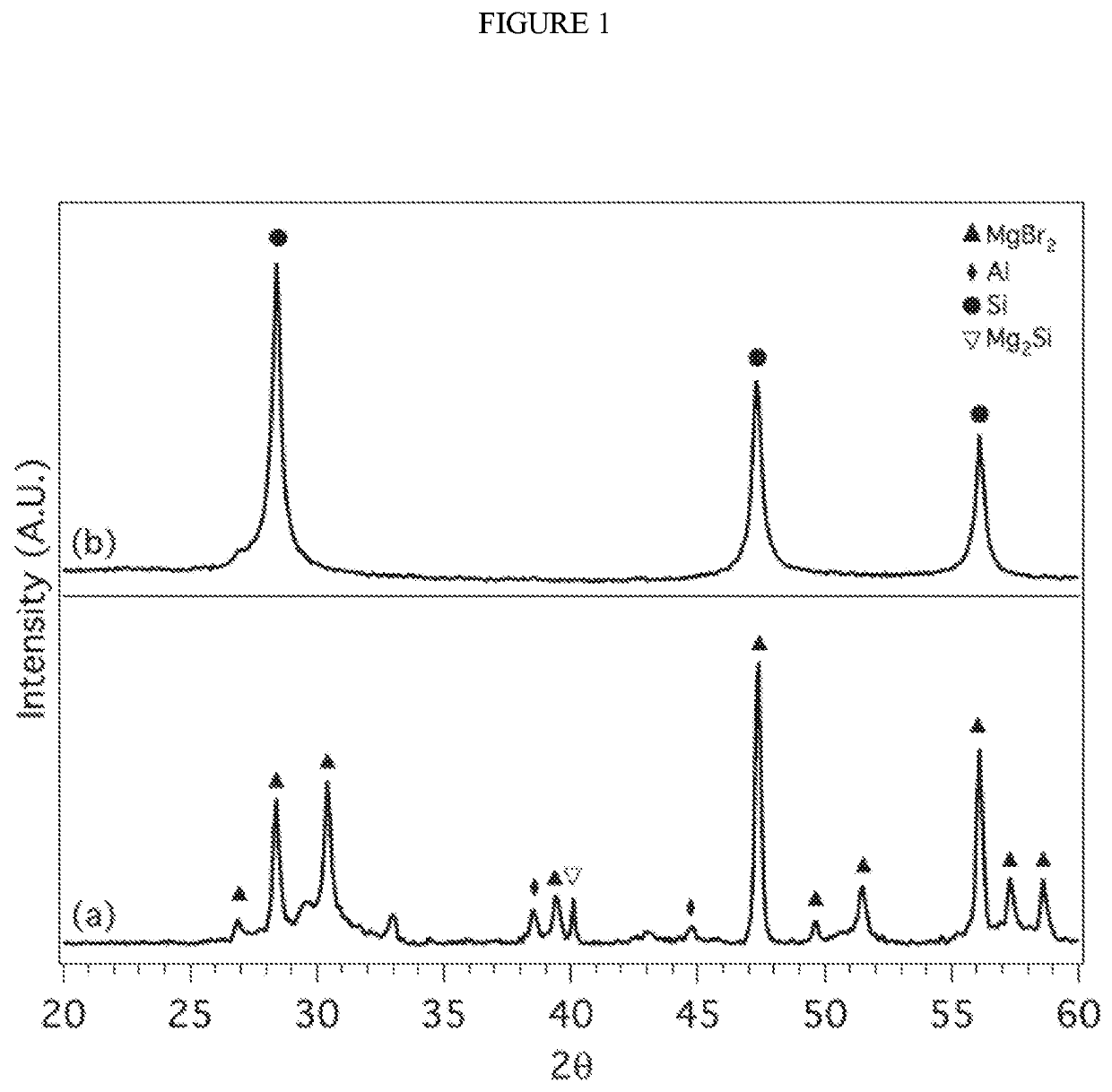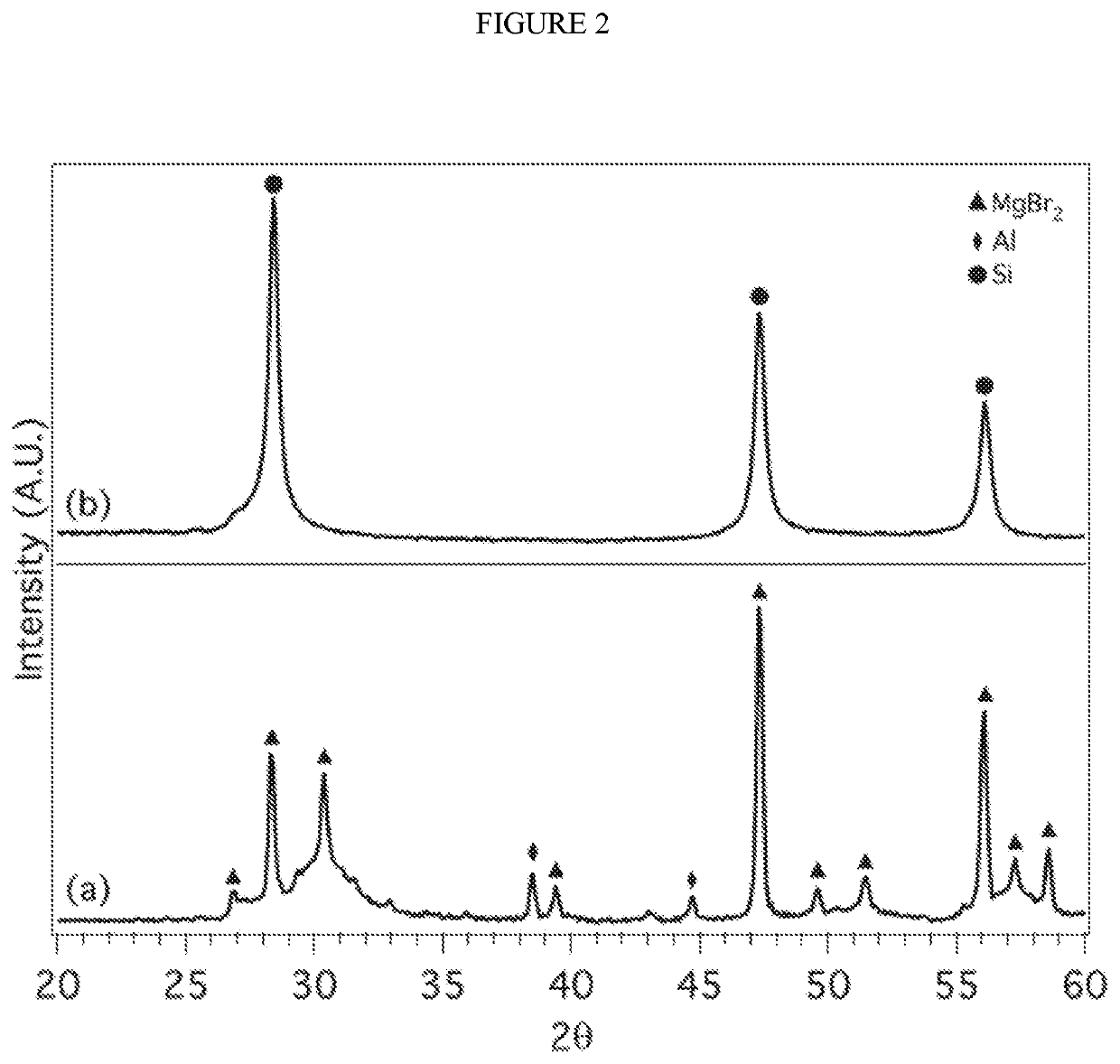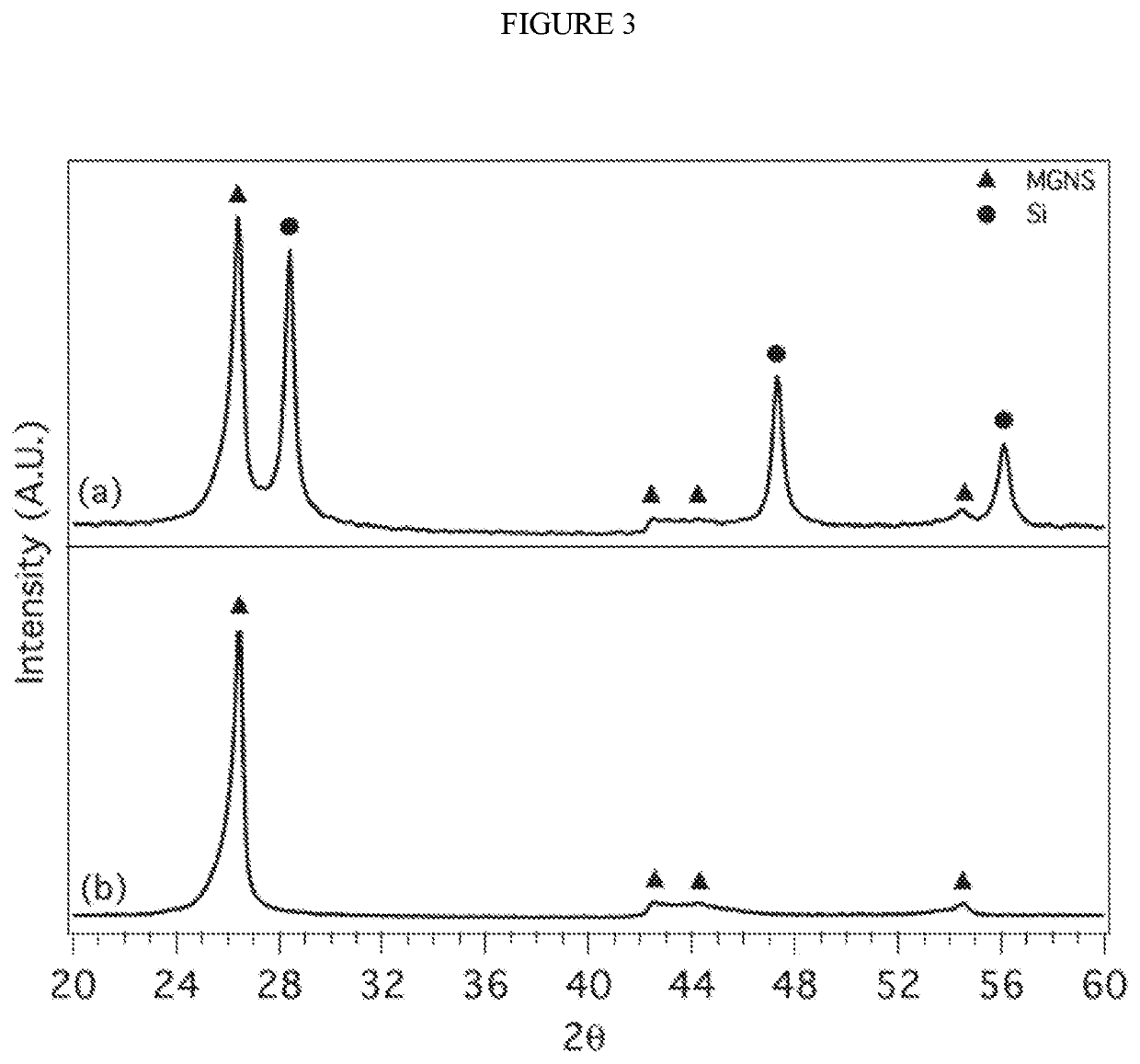Low temperature, high yield synthesis of nanomaterials and composites from Zintl phases
a nanomaterial and phase technology, applied in the direction of active material electrodes, cell components, electrical apparatuses, etc., can solve the problems of mechanical degradation, rapid anode failure, and lack of one or more aspects of all these methods, and achieve high temperature carbonization, high performance, and high capacity for electrochemical energy storage
- Summary
- Abstract
- Description
- Claims
- Application Information
AI Technical Summary
Benefits of technology
Problems solved by technology
Method used
Image
Examples
example 1
MGNS Synthesis
[0110]MGNS consists of highly graphitic, nested, graphene layers that form the walls of “spheroidal” shells (they can appear significantly distorted from spherical), each surrounding a void left by removal of a nanoparticulate metal catalyst around which it formed (see, e.g., Wagner et al., Hollow Carbon Nanosphere Based Secondary Cell Electrodes, 2009). MGNS is a CO2-negative carbon material synthesized from biomass char, the waste product of pyrolytic bio-oil synthesis (see, e.g., Woolf et al., Environ. Sci. Technol., 48, 6492, 2014 and Xiu et al., Renew. Sustainable Energy Rev., 16, 4406, 2012).
[0111]MGNS was prepared by mixing 10 g of microcrystalline cellulose (Avicel PH-105 NF, FMC BioPolymer) and 4.5 g of CoCl2.6H2O (99.9%, Alfa Aesar) in a hardened steel cup (80 mL) with six hardened steel balls (1 cm diameter, 10:1 ball to powder mass ratio) at 300 rpm for 30 min using a Fritsch Pulverisette 6. The resulting powder was pressed at 10,000 psi (Carver 3851 bencht...
example 2
Synthesis of Si Nanomaterial by Mechanical Milling of Silicide and Aluminum Salt
[0139]In a nitrogen filled glove box (2 and H2O) 1.5 mg of Mg2Si (99.9% Alfa Aesar) was combined with 4.0 g of anhydrous AlCl3 (99.9% Sigma Aldrich) in a 80 mL tungsten carbide cup with 4 tungsten carbide 1.5 cm balls. The cup was capped with a lid and a Viton O-ring. Insulating tape was placed around the seal gap to provide additional protection from oxygen. The reactants were milled at 450 rpm for 18 hours. The cup was transferred back into the nitrogen filled glove box and the contents were transferred to a round bottom flask containing a stir bar and capped with a rubber septum. Under nitrogen gas purge, deionized water (purged with argon) was transferred to the round bottom flask via cannula to dissolve the unwanted salts. A 10% HCl solution was added to dissolve Al and any unreacted Mg2Si. The solution was stirred overnight, the Si product washed with distilled water until a neutral pH was obtained...
example 4
Synthesis of Si Nanoparticles in a Molten Salt
[0152]Sodium chloride (2.0 g, ACS certified, Fisher Scientific) and potassium chloride (1 g, ACS certified, Fisher Scientific) were dried overnight at 300° C. and then added with aluminum chloride (7.6 g, anhydrous 99.985%, Alfa Aesar), and Mg2Si (0.24 g, 99.5%
[0153]Alfa Aesar) to a 50 mL Pyrex round bottom flask containing a polytetrafluoroethylene coated stir bar. The flask was then heated to 150° C. resulting a molten salt mixture. The mixture was stirred for 2 hours and then allowed to cool and solidify, followed by the addition of hydrochloric acid (HCl, 100 ml, ACS grade 36.5 to 38%, VWR Analytical). Following a 3 hour treatment with HCl, the product (Si nanocrystals) was isolated by vacuum filtration and washed with deionized water.
[0154]FIG. 32 shows the XRD pattern for the nanoscale Si produced from Mg2Si in a molten salt matrix of NaCl, KCl and AlCl3 at 150° C., showing evidence of crystalline Si with no apparent impurities.
[01...
PUM
| Property | Measurement | Unit |
|---|---|---|
| temperature | aaaaa | aaaaa |
| temperature | aaaaa | aaaaa |
| temperature | aaaaa | aaaaa |
Abstract
Description
Claims
Application Information
 Login to View More
Login to View More - R&D
- Intellectual Property
- Life Sciences
- Materials
- Tech Scout
- Unparalleled Data Quality
- Higher Quality Content
- 60% Fewer Hallucinations
Browse by: Latest US Patents, China's latest patents, Technical Efficacy Thesaurus, Application Domain, Technology Topic, Popular Technical Reports.
© 2025 PatSnap. All rights reserved.Legal|Privacy policy|Modern Slavery Act Transparency Statement|Sitemap|About US| Contact US: help@patsnap.com



